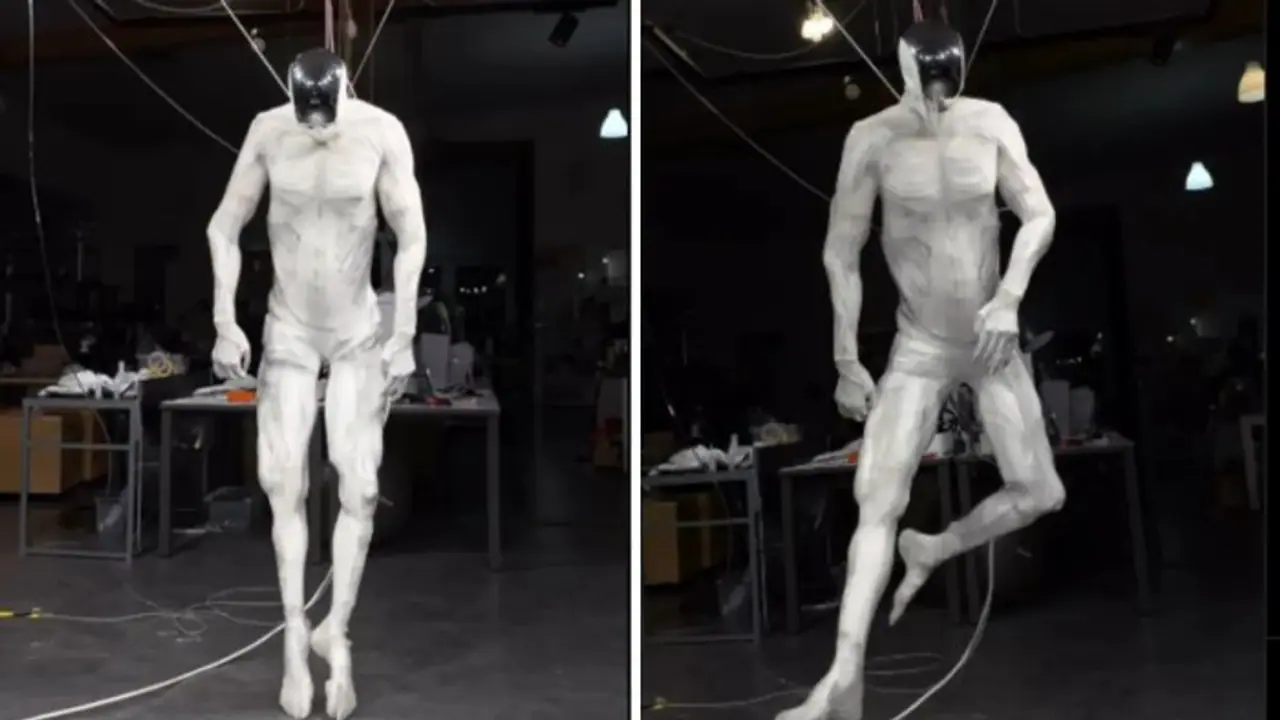In a groundbreaking move, experts have developed a robot with astonishingly lifelike movements – thanks to synthetic muscles beneath translucent skin.
In a groundbreaking move, experts have developed a robot with astonishingly lifelike movements – thanks to synthetic muscles beneath translucent skin. Polish startup Clone Robotics has shared a terrifying new clip of Protoclone, its 'faceless, anatomically accurate synthetic human'.

Protoclone, a six-foot-tall android eerily resembling a human skeleton, devoid of a face but endowed with synthetic bones, tendons, and muscles that mimic real human motion. In a recent viral clip shared by Clone Robotics, the faceless automaton dangles from the ceiling, twitching its limbs with unnerving fluidity—an unsettling sight reminiscent of a sci-fi horror film.
Set against an ominous soundtrack, Protoclone’s erratic movements and bowed head conjure up an image straight out of a mad scientist’s laboratory. The company boldly touts it as “the world’s first bipedal, musculoskeletal android” - a machine designed to move, function, and even exert strength like a human.
Clone Robotics’ video ignited a firestorm of reactions online. Though the machine is bipedal in theory, the video only shows it suspended, flailing its limbs as if struggling to break free. Unlike humanoid robots from rivals like Elon Musk’s Optimus or Boston Dynamics’ Atlas, Protoclone has yet to demonstrate the ability to walk independently.
Despite the lack of facial features, Protoclone boasts an eerily accurate human-like structure with over 200 degrees of freedom, simulating an extensive range of movement. Beneath its exterior, the machine contains 1,000 artificial muscle fibers (myofibers) and 500 sensors, allowing it to respond dynamically to its environment.
Powered by pneumatics, the current version relies on air pressure for movement, but Clone Robotics plans to transition to hydraulics—a system using pistons and fluid, making the machine more efficient and silent. A 500-watt electric pump drives liquid through its system, functioning much like a human heart.
"Pneumatics are loud and usually exceed 86 decibels, whereas Clone’s water pump runs at 36 decibels without any acoustic insulation," the company explained, hinting at future refinements in its design.
Even Michelle Dickinson, a nanotechnologist from New Zealand, admitted feeling uneasy:
"I'm going to admit that seeing this faceless android in action has totally creeped me out," she said in a video posted to LinkedIn. "It's made me realise how accustomed we've become to robots that are designed to look friendly."
Founded in Wrocław, Poland, in 2021, Clone Robotics has since expanded to California, where it's actively recruiting technicians and software engineers. The company is calling on ambitious minds, promising that joining their team means:
"You will accelerate human technology by decades by joining Clone."
They further describe their mission as: “Building musculoskeletal, superintelligent androids with the most human-level hands in the world to solve the common problems of daily life.”
Also read: India's new tech focus: AI, IoT and semiconductors to lead growth, says Piyush Goyal
